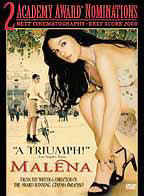Film, Radio and TV - 7 |
Appealing
Hitting A Moving Target Complicating the NPPA film ratings process is the fact that what's deemed acceptable changes every year--sometimes, it seems, every month. Not to long ago the use of the words virgin and mistress in a film was not seen as acceptable--even for adults. Years later, Clark Gable's famous line, "Frankly, my dear, I don't give a damn," in one of the most famous films of all time, Gone With the Wind, stirred major controversy. If you've seen the film, you know that this line signals a critical (and possibly long overdue) turning point in Clark Gable's character, and for this reason the studio demanded that the line remain in the film. Today, of course, it seems silly that such these things could cause such a major stir in a feature film. In terms of what's acceptable and what isn't, things clearly change with time. The following drawing representing the direction of change in the attitudes of the general population will help explain how you hit a "moving target" in film content.
This means that today's "radical" ideas (on the leading edge above) may well be "old hat" in ten years when the green area moves even more toward the right side of the drawing (but not to the right, politically). At that point, some of the old "radical" ideas will be accepted by the majority, and new "radical" ideas and concepts will have entered the picture. You need to remember that two-piece bathing suits, men with long hair, miniskirts, and married couples shown sleeping in the same bed were all at one time radical--even unacceptable--concepts. |
What's new and different is often exciting. What's old and familiar is typically just that--old and familiar. The problem is that if a film is too far ahead of it's time (on the right edge of the green area above) it's not widely understood, or it's seen as being too
threatening to The key is to aim concepts safely in the green area--not too far ahead and not too far behind the times. This is a major factor in hitting your target audience. Note that all this has nothing to do with period pieces, films that are set in the past. The Academy Award for the best picture in 1998 went to Shakespeare in Love. Before that Titanic won best picture. But even though these films were period pieces, the treatment of the subject matter was close enough to the cutting edge to hold audience attention.
We are now seeing some changes resulting from the ability to tailor films and film distribution to specific target audiences. For example, the film The Omega Code, which espoused Christian concepts, and was produced by Trinity Broadcasting Network, was mainly released in the conservative "Bible belt" of the United States. It did very well there, surpassing $2.4 million in its opening week. The film had been widely publicized in churches and on the TBN network. Many films target black audiences. Some, such as the "Shaft" films, featured black stars, but their appeal cut across race and demographics. Black directors, such as Spike Lee and John Singleton (Do the Right Thing, She's Got to Have It, Clockers, Mo' Better Blues, Malcom X, Boyz 'N the Hood) have also made a major impact. Viewer preferences in television programming differ greatly in different parts of the country. Series like "Touched By An Angel," with its religious theme, do better in conservative areas of the United States than, for example, either "NYPD Blue" or "Law & Order, Special Victims Unit," with their frequent sexual themes. This brings us to the following findings on audience demographic differences. The acceptance of sexual themes in films and on TV is, generally speaking, positively related to the educational level, and an urban and northern geographical background of audiences. This means that an educated person who grew up in a northern city would tend to be more accepting of sexual themes than a person with less education who grew up in a small southern town. (Incidentally, over the last few decades, age as a factor has not always been a reliable indicator.) Horror films do best in heartland states like North Dakota, Iowa, and Nebraska. Comedy takes in 20% of box office dollars in the New England states, a figure that ends up being higher than in other parts of the country. And if all this doesn't complicate things enough, remember from the "Moving Target" drawing above that the specifics of these values tend to be constantly changing. Even so, all of this represents just one of the many elements involved in a film's success. Against this background there are such things as star power, the "chemistry" between actors, the story line, cinematography, special effects, editing, and, of course, marketing.
Finding the specific elements of success is much more of an art than a science. As you know, there is often major disagreement among film reviewers (experts?) on how good or bad specific films are. For example, the foreign film Melana was heralded as a triumph of filmmaking by some reviewers, and it even won two Academy Award nominations. However, some reviewers panned the film as being one of the worst they've seen. Even though the Academy members found the film worthy of awards, some reviewers were clearly uncomfortable with the adolescent sexual honesty. Film studios, which lose money on eight out of ten films they release, obviously don't have a surefire system of determining success--even with tens of millions of dollars riding on their judgment. Adding to the confusion, reviewers may pan a film, only to find it becomes the number one film in the country. And many films that have gotten excellent reviews are snubbed at the box office. In most cases, "word of mouth" carries more weight than what reviewers say. A good example is My Big Fat Greek Wedding, which we discussed earlier. Here is a list of the ten most financially successful films in history. You might apply your own logic to try to explain their success. These figures were compiled in April, 2000, and exclude foreign distribution.
The effect of receiving an Academy Award nomination for Best Picture has a great impact on a film's success. This chart below shows pictures nominated and the jump in ticket sales that immediately followed.
In the next module, "Movie Milestones," we'll take look at some of the notable films of the last century. | |||||||||||||||||||||||||||||||||||||||||||||||||||||||||||||||||


 traditional, ideas and values (for
the time), it will probably fail.
traditional, ideas and values (for
the time), it will probably fail. 
